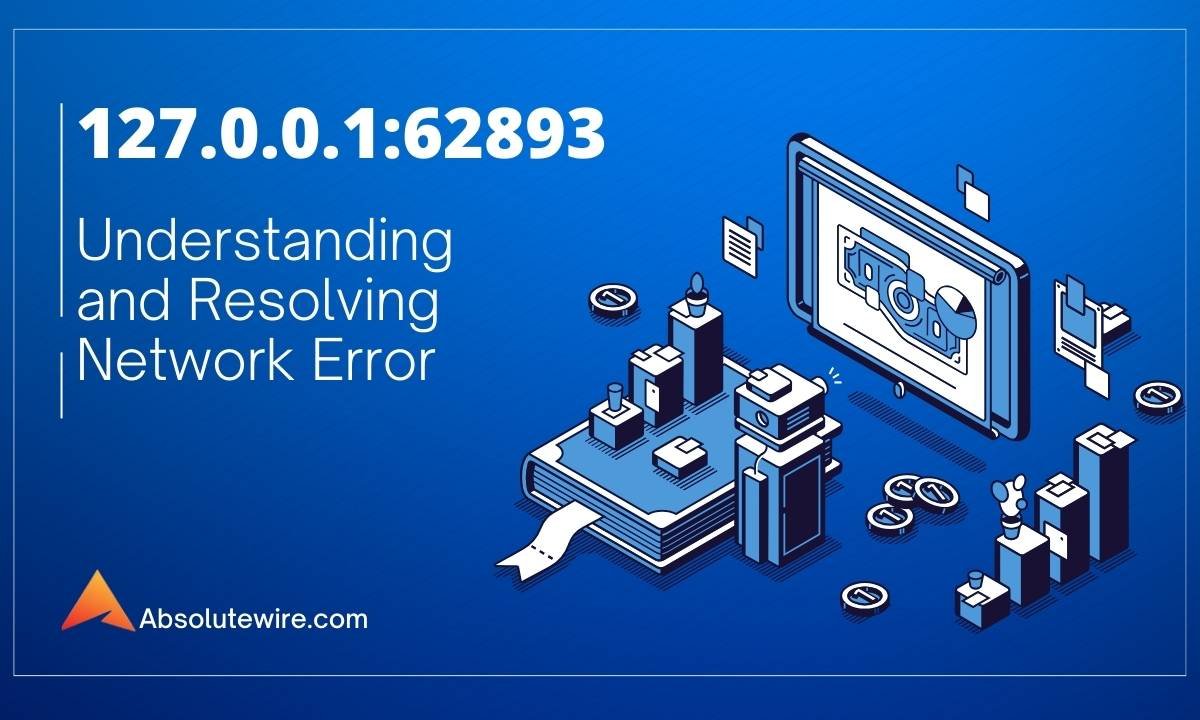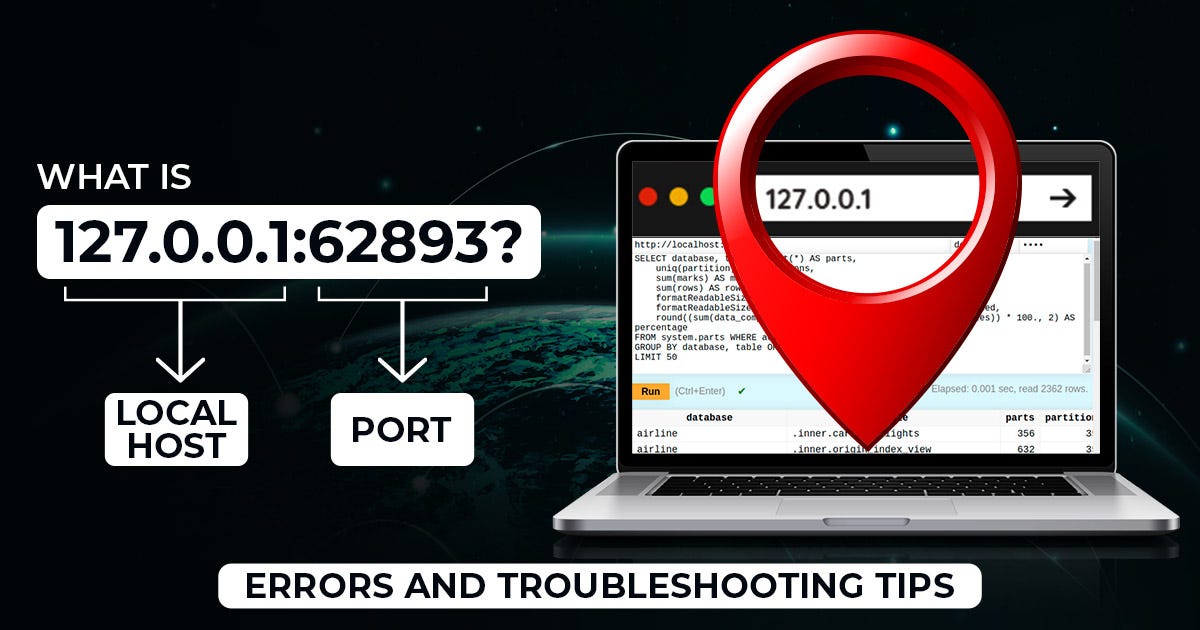Introduction to 127.0.0.1:62893 (Localhost)
Welcome to the world of 127.0.0.1:62893 , where your local server becomes a playground for developers and enthusiasts. Today, we’re diving into the intriguing realm of 127.0.0.1:62893—a specific gateway that opens up countless possibilities for web development and testing on your machine. Whether building an app, debugging code or experimenting with new features, understanding this unique address can unlock secrets that elevate your projects.
But what exactly is Localhost? Why should you care about it? As we explore these questions together, you’ll discover why 127.0.0.1:62893 is the backbone of many digital adventures and how mastering its use can remarkably enhance your skill set. So buckle up! We’re about to embark on a journey through the ins and outs of Localhost that will leave you equipped with knowledge and tools ready for any challenge ahead.
What is Localhost, and Why is it Important?
Localhost refers to the local computer or device you are using. It acts as a server for your applications and websites during development. The IP address 127.0.0.1:62893 is commonly associated with Localhost, allowing developers to test their work without an internet connection.
Its importance cannot be overstated. Localhost provides a safe environment to experiment freely, avoiding potential impacts on live sites or applications. You can troubleshoot errors in real-time, making it easier to ensure everything functions correctly before deploying changes.
Additionally, Localhost allows quicker loading times since data doesn’t need to travel online. This speeds up the testing process significantly and enhances productivity for developers and designers alike.

Using tools like databases locally further streamlines workflows by keeping everything contained within one environment, providing a seamless 127.0.0.1:62893 when building applications or websites.
The Benefits of Using Localhost
Using Localhost comes with various advantages that can significantly enhance your development experience.
First, it provides an isolated environment for testing applications. You don’t risk affecting live sites or production data while making changes. This safety net allows developers to experiment freely.
Speed is another significant benefit. Accessing resources on 127.0.0.1 means faster load times than remote servers, leading to quicker iterations and increased productivity.
Localhost also simplifies debugging processes. Developers can pinpoint issues in real-time without the complications of network latency or server configurations.
Additionally, using Localhost fosters 127.0.0.1:62893 collaboration among team members working on shared projects. Everyone can synchronize their environments easily, ensuring consistency across different setups.
The flexibility of configuring various services locally enables you to mimic production settings closely while maintaining control over the entire stack right at your fingertips.
How to Set Up and Access Localhost
Setting up and accessing Localhost is straightforward. Most operating systems already have it configured. To start, open your web browser.
Type in the address bar 127.0.0.1:62893 or Localhost. Both will lead you to the same place—a local server environment on your machine.
Launch the application first to activate the server services if you’re using tools like XAMPP, WAMP, or MAMP. This allows you to run scripts and test applications locally without an internet connection.
For developers working with specific ports—like 62893—ensure that your application is listening on that port before accessing it through your browser. To access it directly, add 62893 at the end of your URL.
Remember to check firewall settings if you cannot connect; they can block local connections unexpectedly!
Unlocking the Secrets of Localhost
Localhost is like a hidden treasure trove for developers and tech enthusiasts. With the IP address 127.0.0.1:62893, you tap into an environment that mirrors your live server settings without any risks.
One secret lies in its versatility. You can run web applications locally, test out new features, or troubleshoot existing code—all without impacting your live site.
Another gem is the ability to simulate various network conditions using localhost tools. This helps in creating more resilient applications by preparing them for real-world scenarios.
Don’t overlook security practices here, either. Localhost provides a safe space to experiment with configurations and software installations before deployment.
Understanding how to manipulate this local environment opens up endless possibilities for learning and development, making it an invaluable resource in every developer’s toolkit.
Troubleshooting Common Issues with Localhost
Localhost can be a powerful tool, but sometimes it needs to cooperate. If you cannot connect to 127.0.0.1:62893, start by checking your network settings. A misconfiguration can often lead to access issues.
Firewall settings may also unexpectedly block connections. Ensure that the necessary ports are open and not restricted by security software.
Another common problem is incorrect server configuration files or paths. Double-check these details to ensure they point correctly to Localhost.
If you still can’t get it working, consider clearing your browser cache or trying a different web browser entirely. Sometimes, old data can create unexpected barriers.
If all else fails, restart your local server environment. This simple step can resolve many issues and restore functionality swiftly.
Tips for Maximizing Your Experience with Localhost
To maximize your experience with 127.0.0.1:62893, consider using a robust local server environment like XAMPP or MAMP. These platforms simplify running multiple applications.
Familiarize yourself with tools like Postman for testing APIs locally. This can save you time and streamline your development workflow.
Regularly check for updates in your software stack to ensure compatibility and access new features that enhance performance.
Explore browser extensions designed for localhost debugging. They provide real-time feedback and help pinpoint issues faster than traditional methods.
Remember version control systems such as Git, which allow you to manage changes effortlessly while working on your local projects.
Engage with online communities focused on local host development. Sharing experiences can lead to valuable insights and tips that elevate your work further.
Conclusion
Understanding 127.0.0.1:62893 opens the door to a world of possibilities in web development and testing. Localhost is not just an address; it’s your gateway to creating, experimenting, and refining applications before they go live.
As you explore its benefits, from speed and security to easy access for developers, you’ll find that mastering Localhost can significantly enhance your workflow. Setting up Localhost might seem daunting initially, but with the clear steps outlined above, anyone can do it effortlessly.
Unlocking its secrets means diving into capabilities like server configurations or database management without fearing affecting real user experiences. Troubleshooting common issues makes you more adept at identifying problems quickly—an invaluable skill in tech environments.
Maximizing your experience on this local interface will improve your projects’ efficiency and creativity. Whether you’re a beginner or a seasoned developer, embracing 127.0.0.1:62893 will undoubtedly transform how you approach coding tasks.
Make the most of this powerful tool as you continue your journey through technology!




